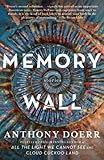 In “None of the Above,” the final story of Suzanne Rivecca’s Death is Not an Option, out in paperback this week, we are told that protagonist Alma has “unknowingly bumbled into the terrible and debased presence of God, gone to seed.” The statement is an acknowledgment of the perverse suffering that has prefigured the ending of this collection, as the young women of Rivecca’s creation are forced to cope with trauma from their girlhoods in relentless, Sisyphean cycles. Her heroines are eye-for-an-eye Catholics—lapsed or soon-to-be lapsed—whose vengeance inverts into masochism. On the surface, none of her characters appear to be the products of poisoned environments. They come from solid families and go to good colleges; they demonstrate precocity, if not outright intelligence. But something has gone terribly wrong. Whether it’s because of sexual abuse or an anxiety disorder, or both, these young women have fully inhabited the dark side of middle class entitlement.
In “None of the Above,” the final story of Suzanne Rivecca’s Death is Not an Option, out in paperback this week, we are told that protagonist Alma has “unknowingly bumbled into the terrible and debased presence of God, gone to seed.” The statement is an acknowledgment of the perverse suffering that has prefigured the ending of this collection, as the young women of Rivecca’s creation are forced to cope with trauma from their girlhoods in relentless, Sisyphean cycles. Her heroines are eye-for-an-eye Catholics—lapsed or soon-to-be lapsed—whose vengeance inverts into masochism. On the surface, none of her characters appear to be the products of poisoned environments. They come from solid families and go to good colleges; they demonstrate precocity, if not outright intelligence. But something has gone terribly wrong. Whether it’s because of sexual abuse or an anxiety disorder, or both, these young women have fully inhabited the dark side of middle class entitlement.
 If you follow the prize circuit for literary writers, you’ve probably come across Suzanne Rivecca before. She’s been featured in numerous year-end anthologies and honored with Stegner, NEA, and Radcliffe fellowships. Death is Not an Option, her debut, was recently a finalist for The Story Prize, losing out to Anthony Doerr’s Memory Wall, and was featured on more than a few prestigious “Best of” lists. Even a cursory glance at her fiction leaves no doubt as to how Rivecca has earned such a pedigree, as she is a significant talent. There’s no questioning her wit and power on the page—and among her many gifts is the ability to craft some really knock-out, drop-dead last lines, the kind of parting shot that makes you want to flip back and retrace the steps that led you to such an astonishing place.
If you follow the prize circuit for literary writers, you’ve probably come across Suzanne Rivecca before. She’s been featured in numerous year-end anthologies and honored with Stegner, NEA, and Radcliffe fellowships. Death is Not an Option, her debut, was recently a finalist for The Story Prize, losing out to Anthony Doerr’s Memory Wall, and was featured on more than a few prestigious “Best of” lists. Even a cursory glance at her fiction leaves no doubt as to how Rivecca has earned such a pedigree, as she is a significant talent. There’s no questioning her wit and power on the page—and among her many gifts is the ability to craft some really knock-out, drop-dead last lines, the kind of parting shot that makes you want to flip back and retrace the steps that led you to such an astonishing place.
The collection begins with the title story, which tells of a retreat for the graduating seniors of a small parochial school in Michigan and deals with a clique of girls who direct their considerable venom inward. Emma, the focus here, is generally mistrustful. She is well-versed in SAT-prep guides and fluent in teenage girl quirkiness, but these qualities prove to be poor substitutes for maturity. The woodsy retreat is meant to bring her closer to her classmates during their finals days together, yet Emma becomes even more isolated. In fact, she’s unable to tell anyone that she will attend Brandeis in the fall because the mere mention of moving on to college causes her to break down sobbing.
The story comes to its crux with Emma alone in the forest, in the grip of a crying episode, when a figure emerges in the dark. For Emma, every fear and joy of her life has led to this “terrible and piercing culmination.” Her expectation here speaks to so much of what’s to come in the collection. She’s a character who waits with bated breath for bad things to happen. She anticipates malady. Emma isn’t raped, however. Her sobbing is heard by a future military academy cadet—a boy who “will grow up to either pass conservative legislation or pump gas.” He wants to counsel her through the episode, but Emma can’t accept his help. There’s no remedy for the final mundane days of high school.
As the rest of her classmates come together joyfully in one final group ceremony, at the end of the story, Emma withdraws into a vision of her destiny: “I see terminal therapy. I see myself drowning in a sea of dark progressive heads just like my own, collapsing upon a beautifully manicured campus topiary like a soldier falling on his sword. I see a counselor with a poly-blend twinset and deep circles under her eyes, and I see myself going to her every day and talking about my fucking feelings and how I cannot thrive in any but utterly hostile circumstances.” And, in what follows, we too will see these things.
Of the more vital stories in Death is Not an Option is a two-part narrative titled “Very Special Victims.” In “Good Samaritan Points” we are given the story of a young girl, molested by her uncle, who is unable to find acceptance and a sense of identity after the fact. Kath’s parents rush at her when she tells them what happened, “necks thrust out, faces red, not blinking, their voices rising as they spat questions at her until she burst into tears with the knowledge that she had damaged everyone’s life in some irreversible and unfathomable way.” No one knows what to do with Kath. The priest and nuns at her school, her relatives, they’re all equally at a loss. She wants to make them feel better but doesn’t know how to do this, because “soft tones of voice and direct eye contact, the wheedling seduction of these tiny kindnesses, undid her.” Eventually Kath discovers her own body, and thinks that “she must be falling in love with herself.” She finds “soft places that had never been properly heralded: the warm silky expanse of abdomen, the inside of the wrist with its tender blue marbling of veins and its matchstick bones.” She moves her hand under her shirt and is “moved almost to tears by the chamois softness of her torso.” And then, continuing the devastating logic, Kath realizes, “This is what he liked.” She tries to reclaim her body from her abuser by understanding its sexuality, its realness, and its value.
In “Uncle,” we rejoin Kath decades later. As an adult, she dates men who, once they learn she was molested, “treat her like the burial site of an ancient civilization.” Her boyfriends suggest self-help books, they speak in psycho-babble and mistrust her considerable libido. Kath tries to impart that the abuse “did not define her.” She’s become a woman who struggles with intimacy, who masturbates compulsively, “in the artless prodding way of a food craving,” and loves novels with women who “lived in reduced-but-genteel circumstances and drank thrice-steeped tea and spoke with dispirited eloquence.” Kath still finds ways to blame herself for what happened, remembering how she’d been able to make herself come by age four and had never been ashamed of “her orgasmic aptitude.” She wonders if “the furious, murky attentions of the uncle were the unspoken consequence of her precocity, like blindness and hairy palms,” or if they were the cause. (Rivecca has a particular knack for placing her characters in spots that not only threaten their physical safety, but also represent self-betrayal.) More than anything, it exasperates Kath that an abuser can isolate “what he did from what he was” and then go on with life. She can’t do this. Her body is the scene of the crime.
It’s hard to find fault with any of these stories, as they are all exceptionally strong pieces. Yet, the collection tends to hit the same note over and over, in content and theme, and it’s possible that, despite being significant works, these stories have more power as individual pieces than they do as a whole. Emma tears up at the end of the title story, but only with the outward appearance that she has learned to value and accept her classmates. “Very Special Victims” shows how the echoes of abuse are unending, and that the victim must ultimately face them alone. In “Look, Ma, I’m Breathing,” another standout story, we’re presented with a confessional memoirist who doubts that any other subject will interest her as much as her own life. She refers to her works as “testimonies of harm,” an apt description for each story in Death is Not an Option. All of these stories feature female lead characters of nearly identical background, a few of them take place in eerily similar apartments. These are almost exclusively abused women pushed to the brink of an emotional breakthrough that’s just out of reach. There are no reconciliations for these masochists and pathological liars, these confused and abused children. In the end, there is only a tentative understanding of what has happened, despite a fierce will to face what comes after the abuse.









